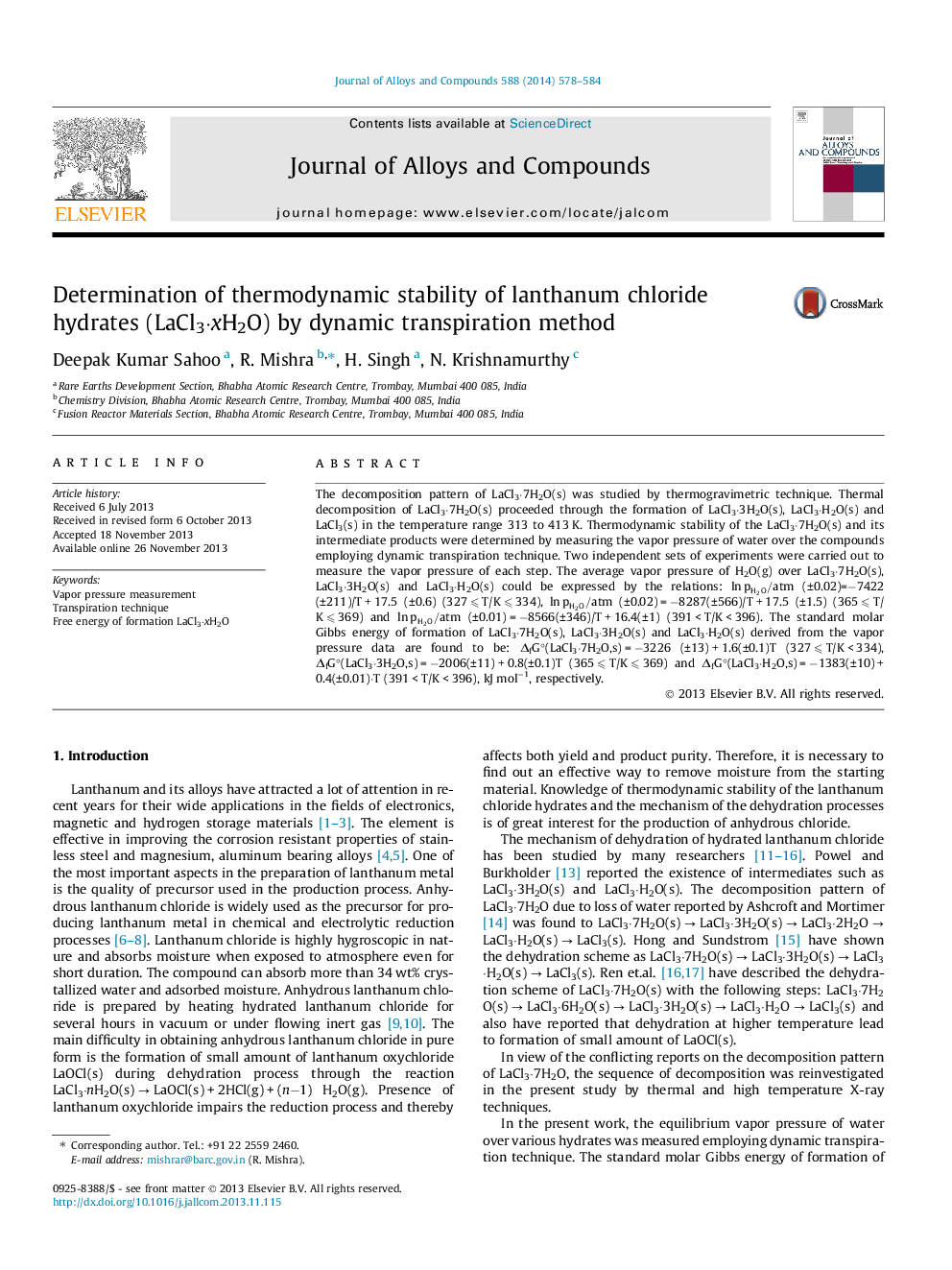| Article ID | Journal | Published Year | Pages | File Type |
|---|---|---|---|---|
| 1612234 | Journal of Alloys and Compounds | 2014 | 7 Pages |
Abstract
The decomposition pattern of LaCl3â
7H2O(s) was studied by thermogravimetric technique. Thermal decomposition of LaCl3â
7H2O(s) proceeded through the formation of LaCl3â
3H2O(s), LaCl3â
H2O(s) and LaCl3(s) in the temperature range 313 to 413Â K. Thermodynamic stability of the LaCl3â
7H2O(s) and its intermediate products were determined by measuring the vapor pressure of water over the compounds employing dynamic transpiration technique. Two independent sets of experiments were carried out to measure the vapor pressure of each step. The average vapor pressure of H2O(g) over LaCl3â
7H2O(s), LaCl3â
3H2O(s) and LaCl3â
H2O(s) could be expressed by the relations: lnpH2O/atm (±0.02)=â7422 (±211)/T + 17.5 (±0.6) (327 ⩽ T/K ⩽ 334), lnpH2O/atm (±0.02) = â8287(±566)/T + 17.5 (±1.5) (365 ⩽ T/K ⩽ 369) and lnpH2O/atm (±0.01) = â8566(±346)/T + 16.4(±1) (391 < T/K < 396). The standard molar Gibbs energy of formation of LaCl3â
7H2O(s), LaCl3â
3H2O(s) and LaCl3â
H2O(s) derived from the vapor pressure data are found to be: ÎfG°(LaCl3â
7H2O,s) = â3226 (±13) + 1.6(±0.1)T (327 ⩽ T/K < 334), ÎfG°(LaCl3â
3H2O,s) = â2006(±11) + 0.8(±0.1)T (365 ⩽ T/K ⩽ 369) and ÎfG°(LaCl3â
H2O,s) = â1383(±10) + 0.4(±0.01)â
T (391Â <Â T/KÂ <Â 396), kJÂ molâ1, respectively.
Related Topics
Physical Sciences and Engineering
Materials Science
Metals and Alloys
Authors
Deepak Kumar Sahoo, R. Mishra, H. Singh, N. Krishnamurthy,
